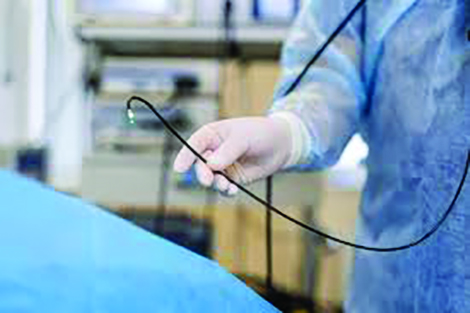For many, home is where the medical tests are
Newswise
Kitchen counters and bathroom sinks turned into miniature medical testing labs over the past year, as millions of people swabbed their noses and found out in minutes if they had COVID-19.
Even before the pandemic, many Americans bought tests that had them spit into a tube at home and pop it in the mail so a company could run tests and alert them to potential health risks lurking in their DNA. In fact, a new poll shows, 48 percent of people age 50 to 80 have bought at least one kind of at-home health test, including 32 percent who acquired COVID-19 tests and 17 percent who took a DNA test.
The use of such direct-to-consumer medical tests varies greatly by age, race/ethnicity, marital status, income and years of education, according to the new report from the National Poll on Healthy Aging. Even so, 82 percent of older adults say that in the future, they would be somewhat or very interested in taking a medical test at home.
The vast majority (92 percent) of older adults agree the results they receive from these tests should be shared with their doctor or other healthcare provider. But among those who actually have bought and used a home test for a non-COVID-19 infection such as HIV or a urinary tract infection, just 55 percent shared their result with their primary care provider, the poll shows. On the other hand, 90 percent of those who bought and used a cancer-related home test said they shared the result.
The poll is based at the University of Michigan Institute for Healthcare Policy and Innovation and supported by AARP and Michigan Medicine, UM’s academic medical center.
“As more companies bring these direct-to-consumer tests to market and buy ads promoting them, it’s important for healthcare providers and policymakers to understand what patients might be purchasing, what they’re doing with the results, and how that fits into the broader clinical and regulatory picture,” said Dr. Jeffrey Kullgren, the poll’s director.
“As we’ve seen in COVID-19, it’s important to share results from a home test with a provider so that it can be used to guide care and be counted in official statistics,” added Kullgren, a primary-care physician and health care researcher at Michigan Medicine.
The poll shows that 53 percent of older adults believe at-home tests are regulated by the government. The reality is complicated. Many types of tests that people can buy to take at home, or that they take at home on the advice of a health professional, are reviewed by the U.S. Food and Drug Administration as medical devices, or overseen by the FDA’s program for testing laboratories that process samples sent to them. But not all of the tests that people can buy directly online or in a store are regulated this way. For instance, tests marketed as “wellness” tests rather than ones used for diagnosis or to guide treatment aren’t regulated; neither are those with minimal risk.
The FDA has a searchable database of home tests it has approved based on evidence about their safety and accuracy, and a page about the COVID-19 at-home tests it has authorized under emergency conditions. It also offers more information about direct-to-consumer tests and home use tests involving a healthcare professional. But not all tests get the full FDA review; the agency advises consumers to ask vendors or healthcare providers about the status of a test.
“Home tests can be a convenient way for older adults to check if they have an illness, such as COVID-19,” said Indira Venkat, senior vice president of AARP research. “But consumers should make sure they know whether the test they are taking is FDA-approved, and how their health or genetic information might be shared.”
The poll report was done online and via phone in among 2,163 adults 50 to 80 years old. Findings included:
- Black older adults were much less likely to have bought an at-home medical test than whites or Hispanics.
- Purchasing of at-home COVID-19 tests was highest among the 50-to-64 age. Purchasing of other types of tests didnt differ by age group.
- Older adults were more likely to have bought at-home tests if they had more years of education, higher household incomes, or were married.
- Advertising played a role in many decisions to buy an at-home test, including 44 percent of those who took a DNA test and 11 percent of those who took a cancer test.
- 74 percent see at-home tests as more convenient than ones taken through their healthcare provider.
- 59 percent say at-home tests can be trusted to provide reliable results.
Source: Newswise, an online site for health and medical news.

